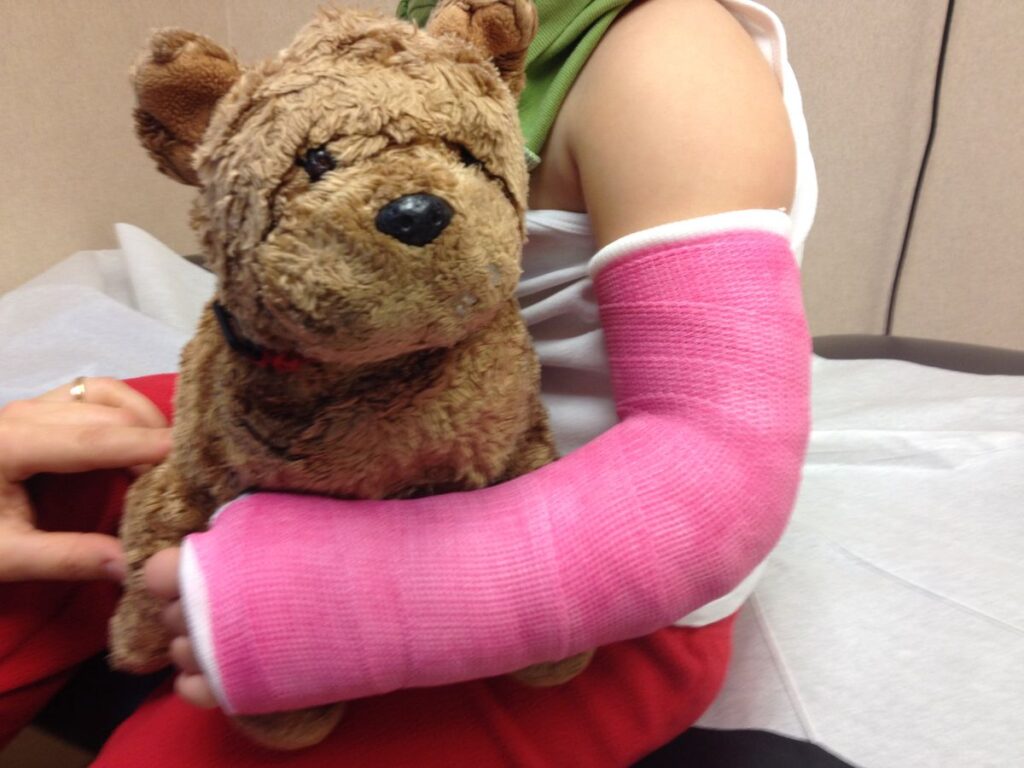Early Signs of Torticollis in Infants: What Parents Should Look For
Torticollis, often referred to as “twisted neck,” is a condition characterized by the abnormal positioning of the head, leading to a noticeable tilt or rotation. It can occur in infants for various reasons, including muscle imbalances or congenital factors. Early detection is crucial for effective treatment and management, as timely intervention can prevent long-term complications. Dr. Rajeev Nirawane, a leading pediatric orthopedic doctor at Orange Health Care Clinic in Wakad, Pune, emphasizes the importance of recognizing the early signs of torticollis to ensure optimal outcomes. This blog will explore the early signs of torticollis in infants, providing parents with the knowledge they need to identify this condition promptly.
Understanding Torticollis
Torticollis can be classified into two main types: congenital and acquired. Congenital torticollis is present at birth and often results from the positioning of the baby in the womb or muscle tightness. Acquired torticollis may develop later due to various factors, including injury or infections. Regardless of the type, the early identification of torticollis is essential for effective treatment.
Early Signs of Torticollis
- Head Positioning: One of the most noticeable signs of torticollis is the abnormal positioning of the head. Infants with torticollis may consistently tilt their heads to one side or rotate their heads toward one shoulder. Parents should observe their baby during daily activities, such as feeding or playing, to see if the head remains fixed in one position.
- Limited Neck Mobility: Babies with torticollis often exhibit reduced neck mobility. They may struggle to turn their heads to the opposite side or may seem reluctant to do so. If you notice that your infant consistently favors one side or has difficulty looking in different directions, it may be a sign of torticollis.
- Uneven Facial Features: Asymmetry in facial features can be another indication of torticollis. When an infant’s head tilts to one side, the muscles on that side may become tighter, leading to unevenness in the face. Parents may observe that one side of the face appears more developed or fuller than the other.
- Flat Spots on the Head: Infants with torticollis may develop flat spots on the back or sides of their heads due to consistent positioning. This condition, known as positional plagiocephaly, occurs when a baby frequently lies in the same position. Parents should regularly check their baby’s head shape and seek advice if they notice flattening.
- Irritability During Movement: Infants with torticollis may become fussy or irritable when their heads are turned to the less favored side. If your baby seems uncomfortable or cries when you attempt to reposition their head, it may indicate underlying tension or discomfort associated with torticollis.
- Difficulty Feeding: Feeding can become challenging for infants with torticollis, especially if they are unable to turn their heads easily. Parents may notice that their baby struggles to latch onto the breast or bottle, often favoring one side. This difficulty can be a significant sign that should not be overlooked.
- Delays in Reaching Milestones: Torticollis can impact an infant’s ability to reach developmental milestones, particularly those involving head and neck control. If your baby is slower to achieve milestones such as lifting their head during tummy time or rolling over, it may warrant further evaluation by a pediatric specialist.
When to Seek Medical Attention
If parents notice any of the above signs or have concerns about their infant’s head position and movement, it is essential to seek medical advice promptly. Early intervention can significantly improve outcomes for infants with torticollis. A pediatric orthopedic doctor, like Dr. Rajeev Nirawane at Orange Health Care Clinic in Wakad, Pune, can assess the condition and recommend appropriate treatment options.
Diagnosis and Treatment
Upon consultation, the orthopedic specialist will conduct a thorough physical examination and may use imaging studies, such as X-rays or ultrasound, to assess the neck muscles and spine. Treatment for torticollis may include:
- Physical Therapy: A structured program of exercises designed to improve neck flexibility, strengthen weak muscles, and promote symmetrical head positioning.
- Positioning Techniques: Encouraging the baby to look in both directions and providing ample tummy time can help counteract the effects of torticollis.
- Bracing: In some cases, a soft collar or brace may be recommended to assist in maintaining proper head positioning.
- Surgical Intervention: In rare cases where conservative treatments are ineffective, surgery may be considered to release tight muscles.
Summary:
Recognizing the early signs of torticollis in infants is crucial for timely intervention and effective treatment. Parents should be vigilant about observing their baby’s head positioning, neck mobility, and overall behavior. If any concerning signs arise, seeking advice from a pediatric orthopedic specialist, such as Dr. Rajeev Nirawane at Orange Health Care Clinic in Wakad, Pune, is essential. With early diagnosis and appropriate care, infants with torticollis can achieve optimal development and enjoy a healthy, active life. By staying informed and proactive, parents can play a vital role in supporting their child’s journey toward recovery.


